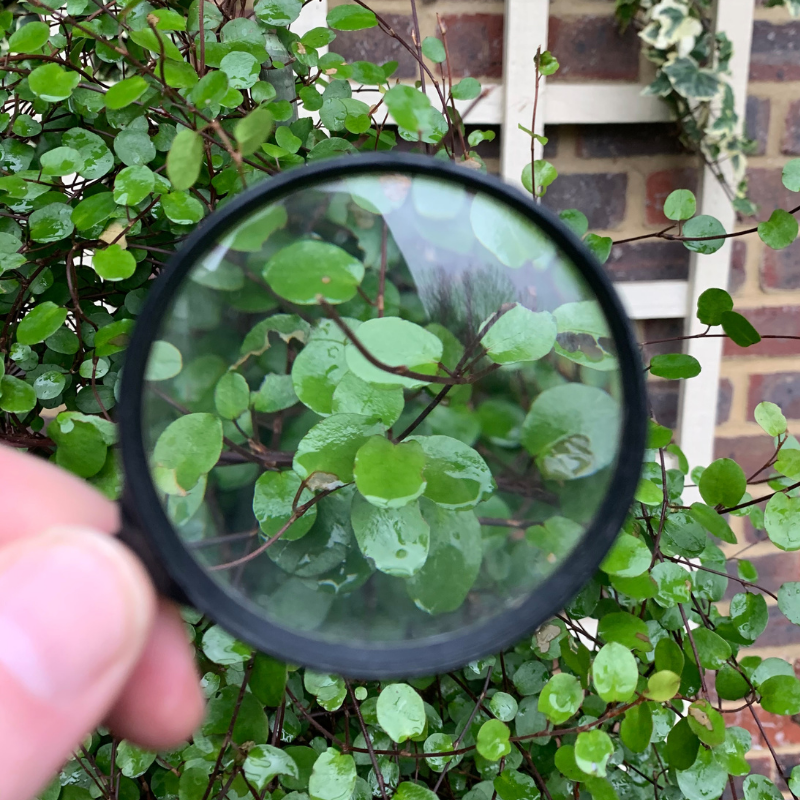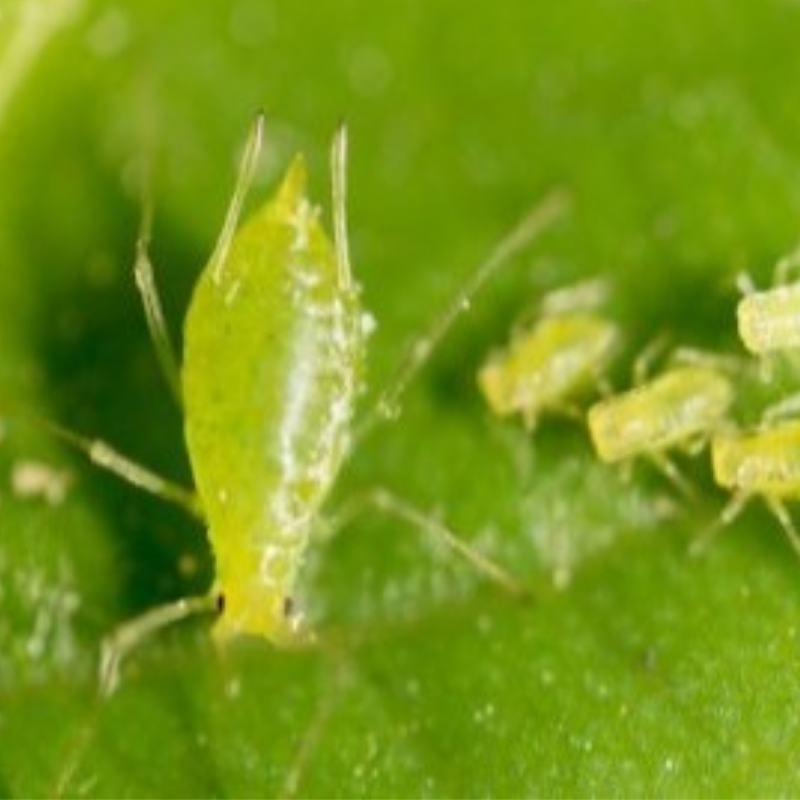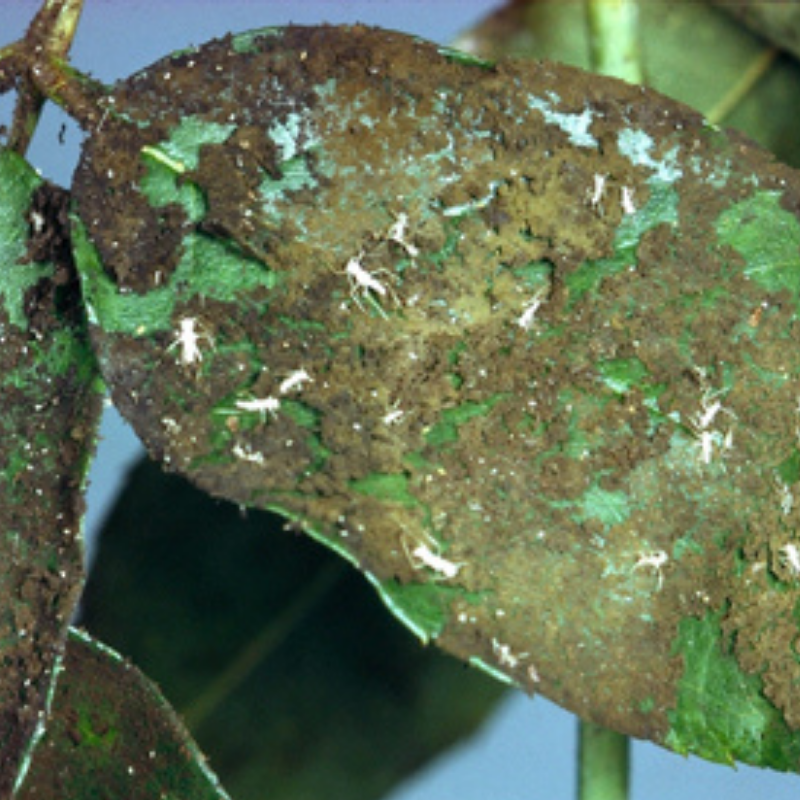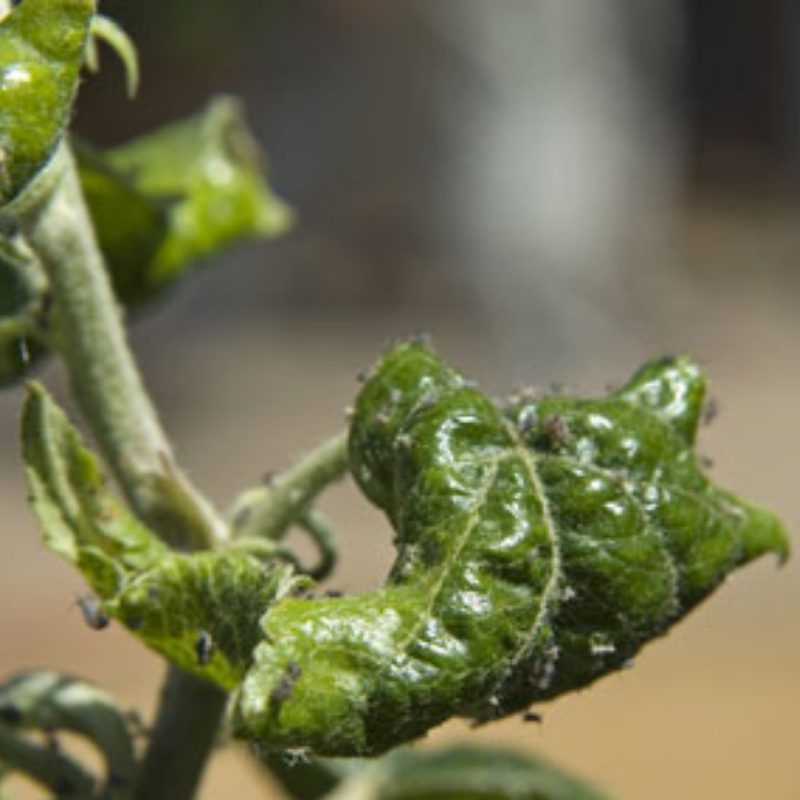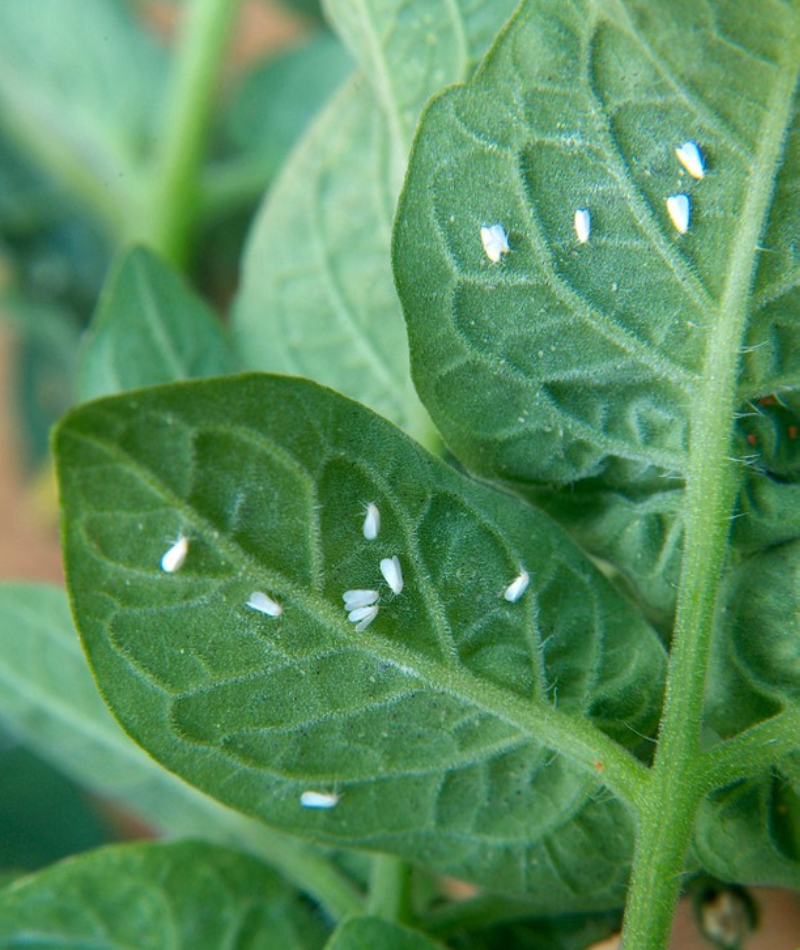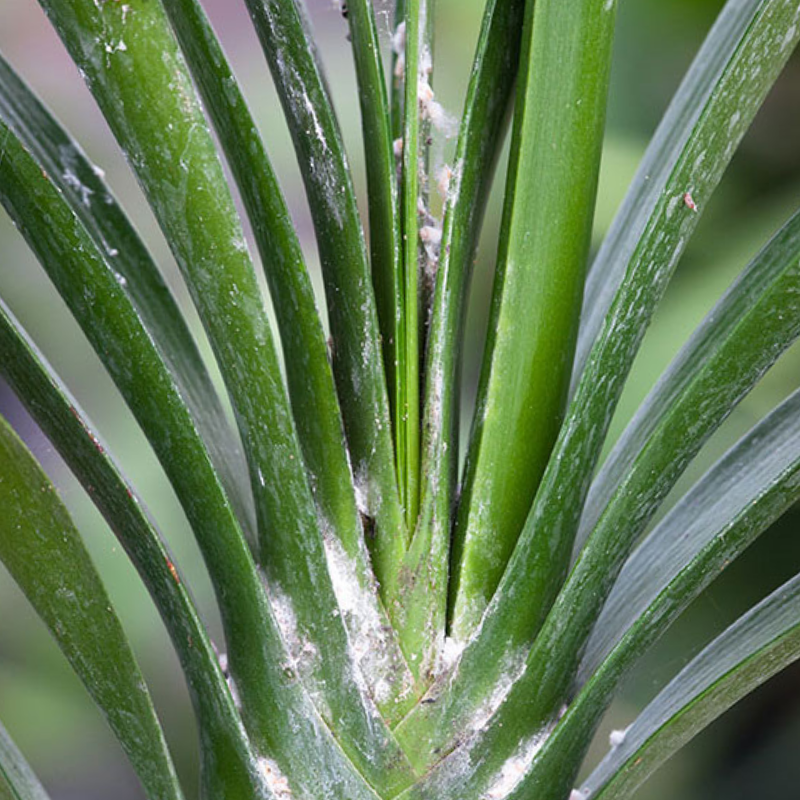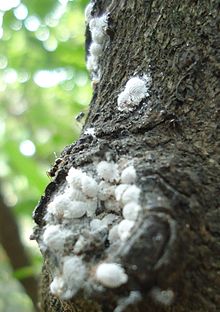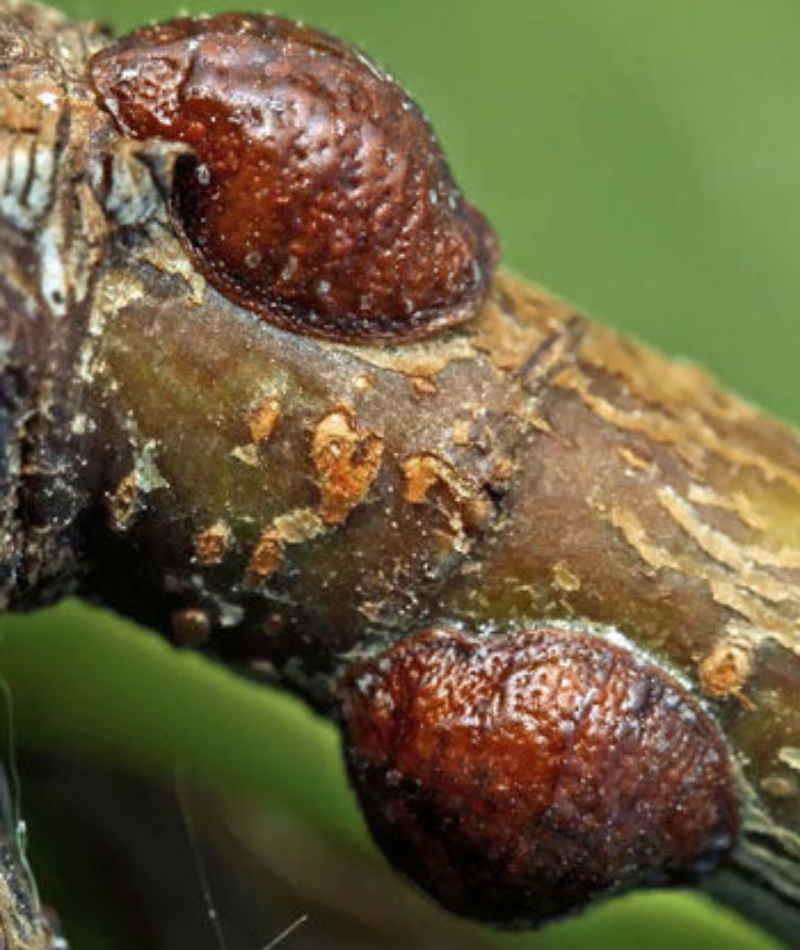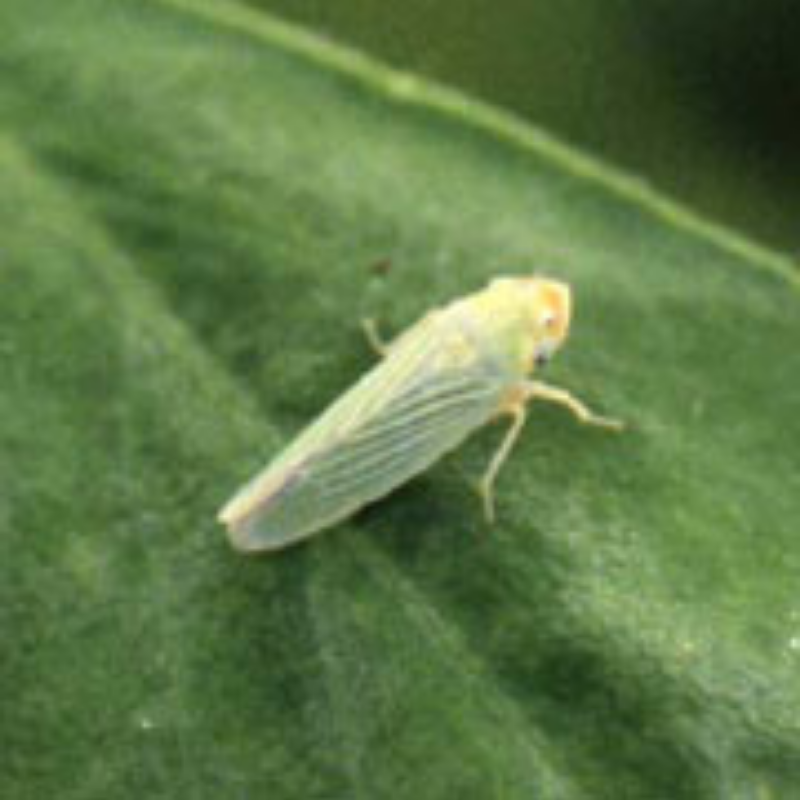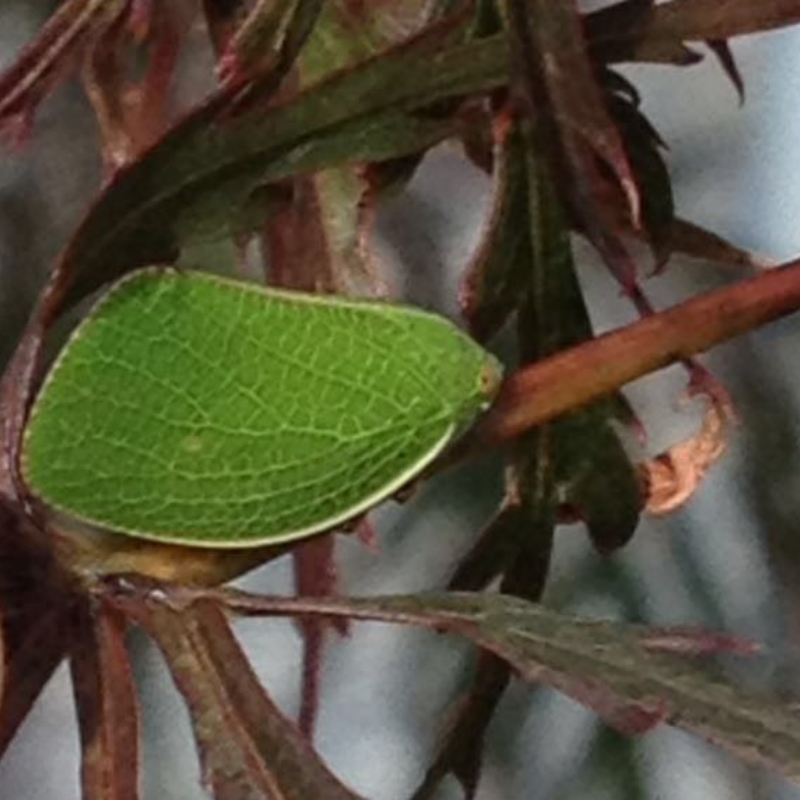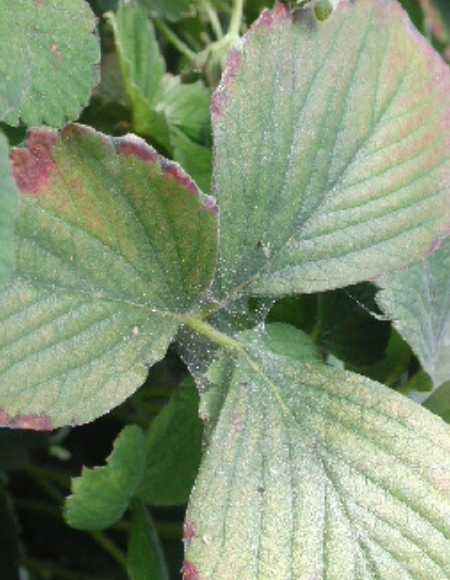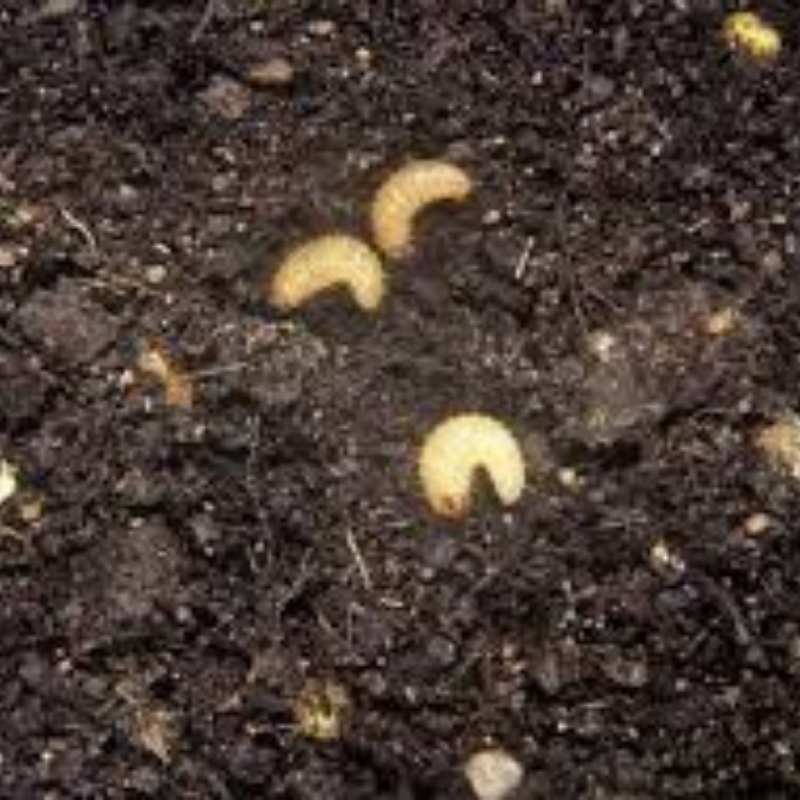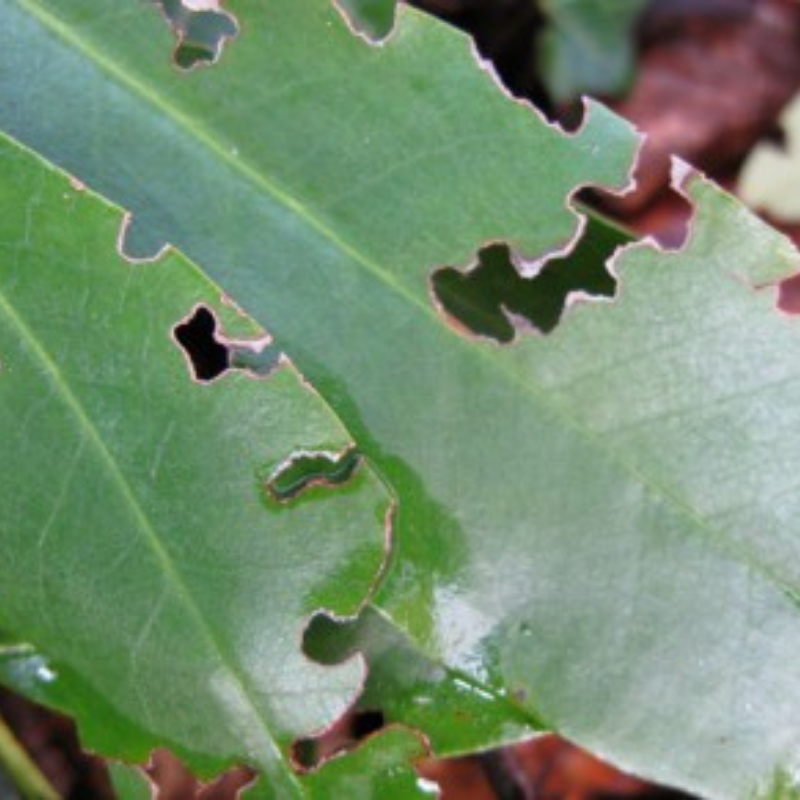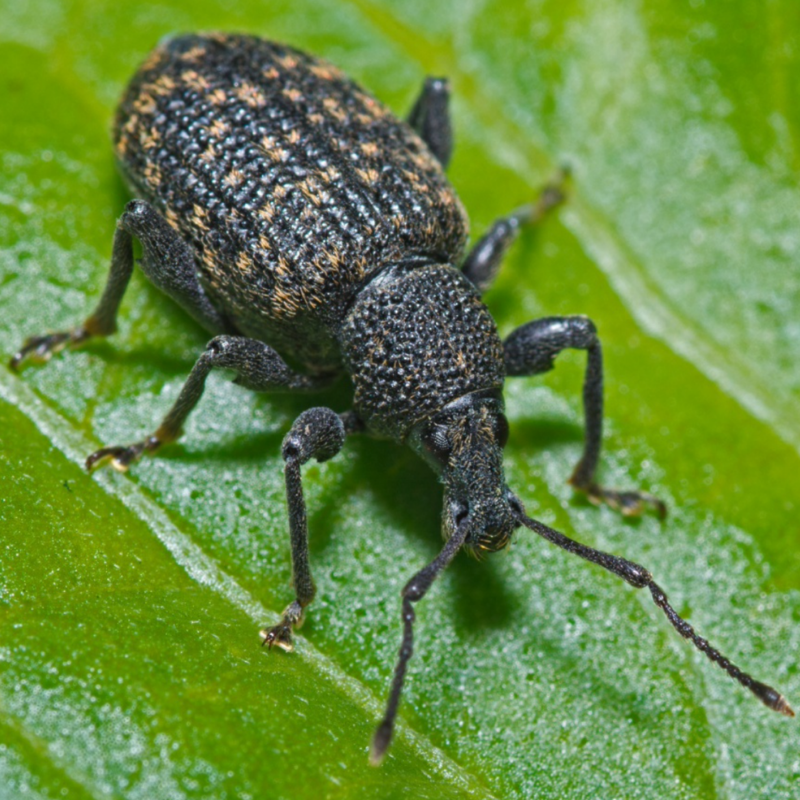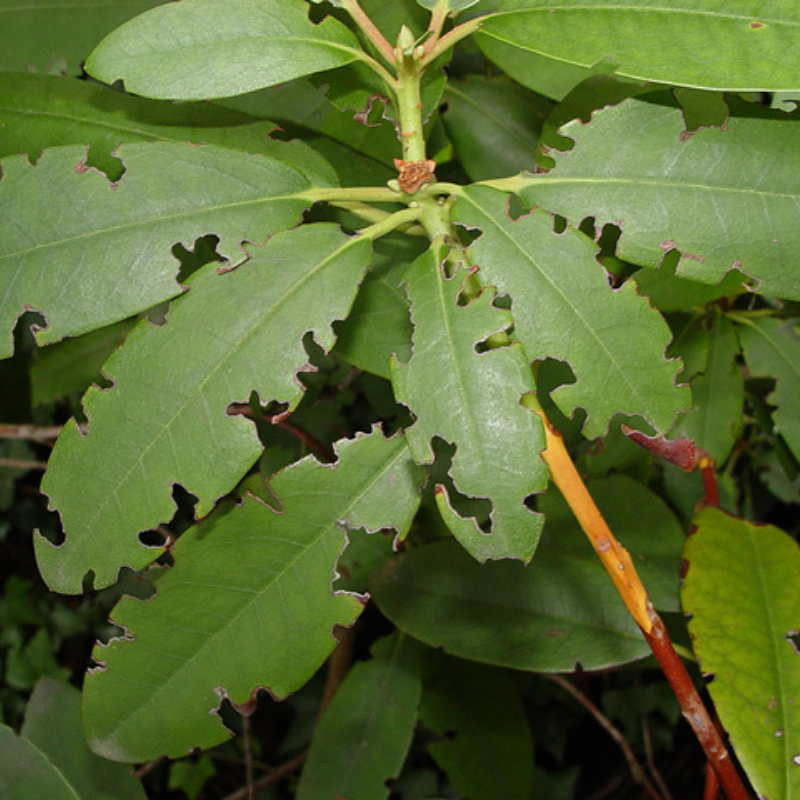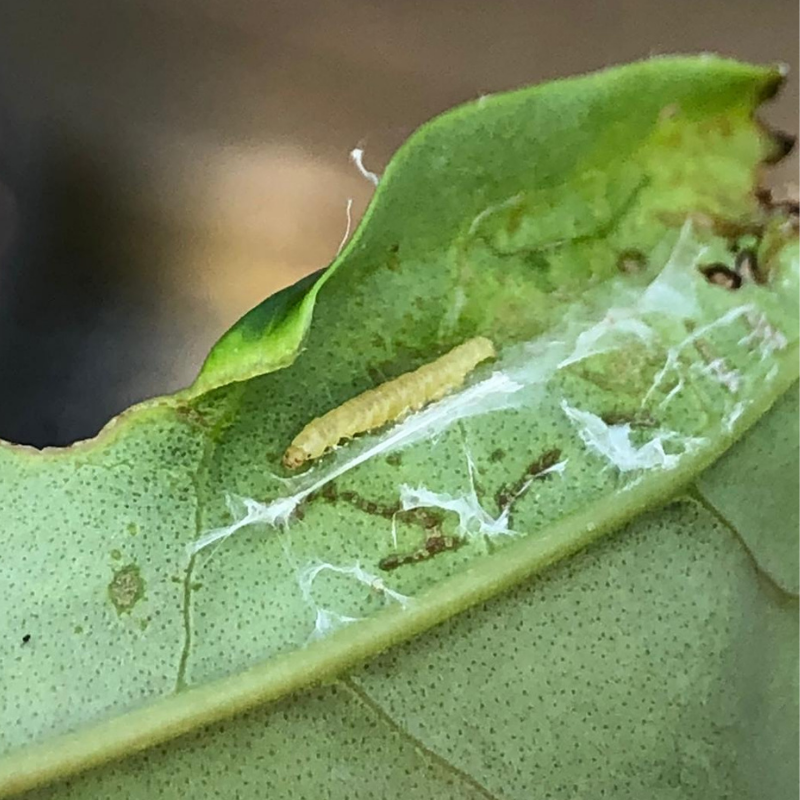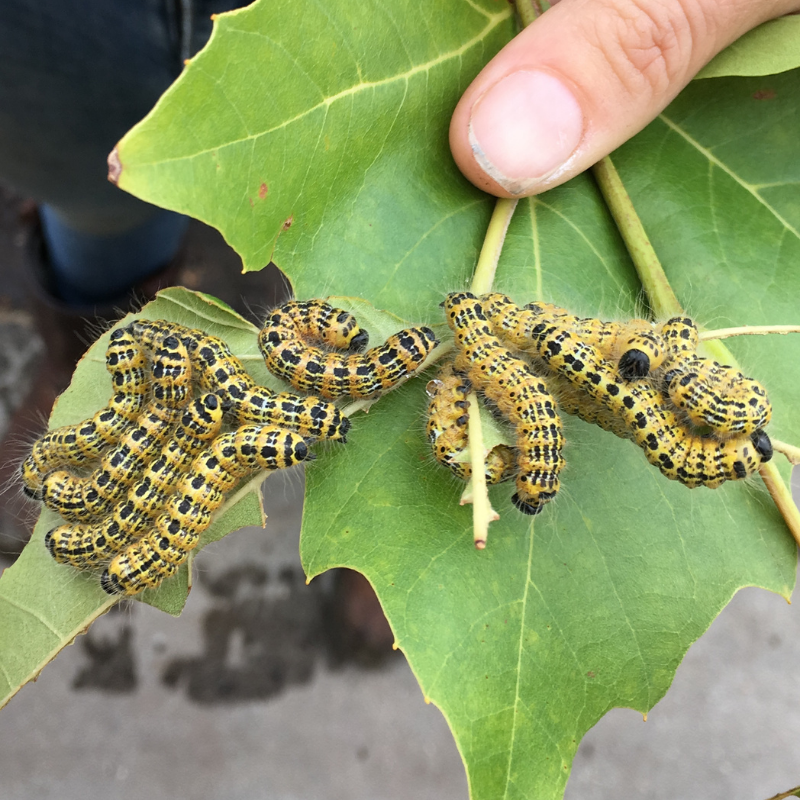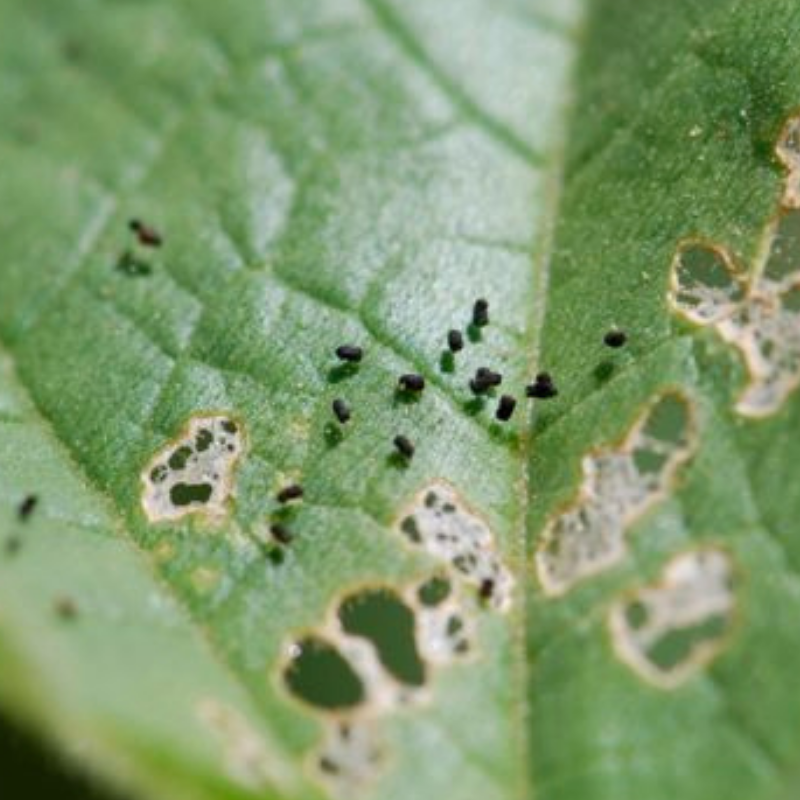
Pest & Disease Guide
Advice For Home Gardeners
Advice For Home Gardeners
Whether your favourite plants are outside or inside they can, unfortunately, easily pick up unwanted pests and disease despite your best efforts. Our guide introduces you to the more common UK pests and how to treat them. It’s by no means definitive, and a wealth of useful information can also be found on the RHS website advice pages.
On our nursery, Richard employs an integrated pest management plan (IPM). This translates into a four-pronged attack: Cultural, Physical, Biological, and Chemical. This is the best way of trying to restore and maintain the natural balance in your garden and the wider environment.
We also supply a selection of products to help you protect your plants and treat some common pests and bugs.
1. Aphid
Aphids, otherwise commonly referred to as, greenfly and blackfly (and a range of other colours) are sap suckers. They pierce the foliage, stems and even roots of plants to feed from the sugars transported via the phloem. Phloem is the living tissue in vascular plants that transports the soluble organic compounds made during photosynthesis to parts of the plant.
Aphids particularly like the soft new growth at the tips of the plant. The symptoms they create can reduce the plant’s vigour, but are unlikely to kill it. However, they are also a common virus carrier or ‘vector’, and can therefore, easily spread a range of infectious biological plant based agents that can cause disease. These are called pathogens.
We’ve found that juvenile aphids like our young banana plants like Musa basjoo and you can apply the contact spray, SB Plant Invigorator to your own in this instance. For bigger colonies hiding away on bamboos, Pittosporum tobira, Pittosporum tobira ‘Vareigatum’ and varieties of Pseudopanax we suggest you start with Scotts Bug Clear.
What to look for
Honeydew & Sooty mould
As a result of eating so much sugar, aphids secrete a clear sticky substance called honeydew. This, in turn, attracts sooty mould spores which germinate and cover the leaf surface with a thin black layer. This reduces the plant’s ability to photosynthesize and produce energy.
Distorted shoots & tips
Aphids have a penchant for new growth, so the tips of new shoots and leaves may grow out with a distorted appearance. Whilst this won’t necessarily damage the plant, it is not aesthetically pleasing.
White casts
The dead casts of aphids (see the picture on the left) are often more visible than the live aphids and are normally on the upper side of the leaf. If you see dead casts before you notice any live aphids then this is a good sign, as natural predators have got to them before you!
Control Methods
Physical
Hang sticky traps to catch aphids in flight. Use a strong hose or jet wash on them to both dislodge them from the plant and remove sooty mould from the leaf surface. Take care not to damage the foliage or the bark though. Additionally, squash them if you can bear it.
Biological
There are many natural predators of aphids, and knowing what they look like is important. Ladybird larvae will eat aphids, as will the larvae of lacewings, hover flies and several other insects. You can buy biological predators from online stockists, but most will only be intended for use under protection, in a greenhouse.
Chemical
There are a range of products available to kill aphids. These can be broken down into contact or systemic products and, further, organic or synthetic products. Depending on your affinity to chemicals, you may prefer to buy an organic product.
Overwintering
Most aphids will overwinter as eggs, typically on a tree or shrub. A pre-winter clean up spray in early November with an organic insecticide is therefore a useful activity to reduce pest levels for the spring.
2. Glasshouse Whitefly
Whiteflies are sap suckers like aphids. They are very small bright white winged insects, normally found on the underside of leaves. They will also secrete honeydew which will attract sooty mould spores, lead to foliage distortion, and reduce the plant’s vigour.
Glasshouse whiteflies thrive in warm conditions, and multiple life-cycles can occur throughout the growing season. However, we have found that given an exceptionally hot and prolonged summer, heat has the reverse effect and actually reduces the emergence of this pest. Other whitefly species do exist, living outdoors, and some are specific to certain plant species only. When the leaves are tapped or disturbed, whiteflies will disperse in cloud-like flurries – you can’t miss them.
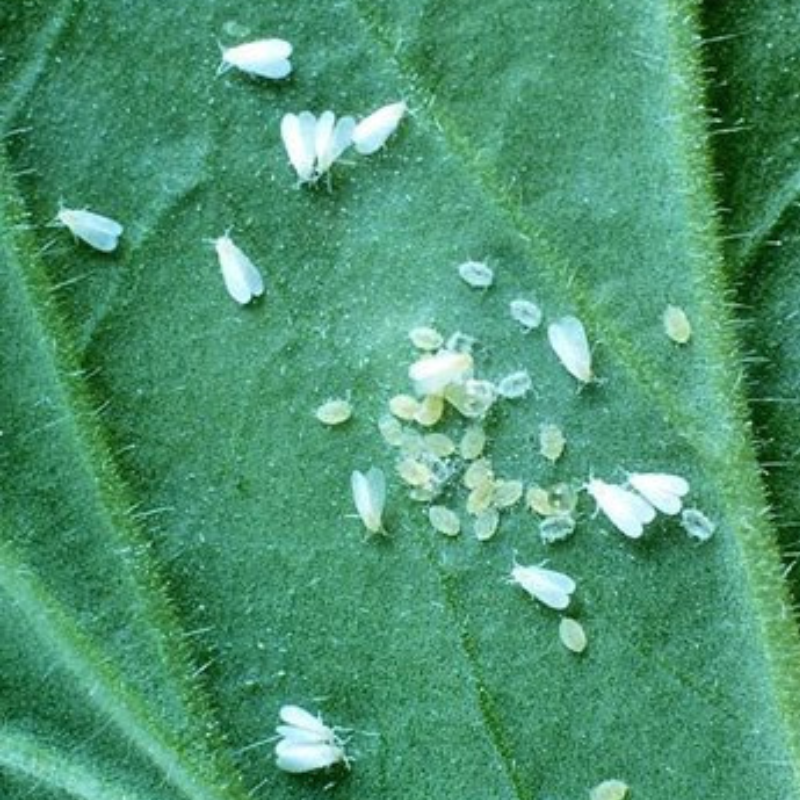
Control Methods
Physical
Use a strong hose or jet wash on them to dislodge them from the plant and remove honeydew and sooty mould from the under side of the leaf surface. Take care not to damage the foliage or the bark.
Biological
A parasitic wasp called Encarsia formosa can be purchased from a range of online suppliers. They are supplied as unhatched pupae on a card. These cards can then be placed around and on the affected plants and the pupae will hatch out. The hatched wasps then seek out the larvae of the whiteflies to parasatise them and stop them from growing into adults.
Chemical
The same chemical controls can be used as for aphids above. However, if chemical controls are to be used alongside biological controls, then a biological pesticide is required so that it won’t kill the Encarsia formosa.
Overwintering
Glasshouse whiteflies can exist all year round, even in unheated glasshouses. They can also feed and breed on weeds as alternative host plants. Therefore, it is important to keep susceptible plants free from weeds and keep glass structures clean.
3. Mealybug
There are a number of species, including Glasshouse mealybug, as well as outdoor species which will infest only specific plants such as Phormiums.
Mealybugs are excellent at hide-and-seek and will invariably settle in the most awkward places to treat. They particularly like leaf axils, the base of leaves in clump-forming plants, twisting stems in climbers, and bark crevices. The insect is quite small and a pink-orange colour, but they are more often spotted due to a white fluffy wax-like secretion that covers them as protection.
Due to their sap-sucking nature, and their hidden position, the damage done by the mealybug can often be seen before the bug is spotted. They will secret honeydew, attract sooty moulds, and reduce a plant’s vigour. As with most pests, they are unlikely to kill the plant outright, but severe infestations can cause leaf death and premature leaf-fall. In the case of a serious infestation you might also need to remove sections of your plant.
Control Methods
Physical
This is quite tricky, but all dead material should be removed as soon as possible in order to keep the plant clean. You could also try blasting them with a jet wash or hose as mentioned for aphids. However, when the bugs are under crevices in the bark, take care not to do more damage with the water at high pressure. The female bugs don’t fly or move far, so sticky traps are not really worthwhile for minimising traveling populations.
Biological
A ladybird called Cryptolaemus montrouzieri can be used for biological control. Both the adult and the larval stage will parasitise the mealbugs. It can be ordered online through several suppliers. There is no biological control that can be used outside.
Chemical
The same chemical controls can be used as for aphids and whiteflies. However, a systematic chemical is often preferable because they can be so well tucked away, hard to hit directly, and have a waxy protective covering. Mealybugs are also likely to require multiple treatments because of these reasons above.
Overwintering
Some mealybugs will overwinter as eggs or nymphs on their host plant in protected hiding places. Glasshouse mealybugs can exist all year round in warm conditions.
4. Scale
Scale insects are sap suckers and look like little limpets. There are multiple scale species in the UK and they can affect houseplants, plants under protection, and plants outdoors. Scale have a shell-like covering when mature that come in a range of colours. Shape-wise, some look like very flat, paper-like flecks on the leaves or stem, whereas some are big and fat and particularly unattractive (see the cottony cushion scale, to the right).
Similar to mealybugs, the actual insect is very small and hides underneath its covering. Again, the damage done by scale and the symptoms caused are often noticeable before the actual insects. Some scale insects will secrete honeydew which will attract sooty mould spores. Heavy infestations will affect the vigour of the plant.
Control Methods
Physical
Applying forms of physical control are quite difficult once the mature adults are secured to the plant. Where possible, infected plant matter should be removed entirely. In its juvenile stages, the early nymphs will crawl around the plant and also travel to neighbouring plants. Sticky barriers put around pots and stems maybe of some use but it is better to get straight in there and squash them and then wipe the area clean.
Biological
Similar to mealybugs and whiteflies, biological controls are available for plants under protection but not outdoors. However, the controls available are very specific to the type of scale insect. You should therefore research the type of scale you have (as it may be specific to your plant only) and see if there is a suitable control available.
Chemical
A contact insecticide will be most efficient for the nymph stages, as they don’t have their protective coverings yet – for outdoor plants, this phase is usually around July. Systemic products are recommended for treating the adult scale insects once they have their protective shells. The insecticide treatment won’t actually remove the insect (as they are very well attached), but it will kill them and stop the breeding cycle.
Overwintering
Soft scale will overwinter as immature females on the twigs of their host plant. A winter clean up spray (as per the chemical guidelines provided above) is therefore recommended to reduce pest levels for the spring if you have a susceptible plant.
5. Glasshouse leafhopper
The last of our common sap-sucking pests is the glasshouse leafhopper. Unlike the previous pests mentioned, these insects are not associated with honeydew and sooty moulds. Instead, they cause a coarse mottling on the leaf surface that looks like it’s been scratched off, rather than bitten or pierced. In more extreme cases, these markings will join upon the leaf surface, and the yellowing of the thinning surface can look like a nutrient deficiency or disease.
Leafhoppers are very small (3mm long), pale-green insects that are hard to spot until moved. If disturbed, they jump off the underside of the leaf and very quickly fly to the next available leaf surface – you’ll see something move, but won’t be able to see what it was or where it went.
There are multiple species of leafhoppers that also affect house plants and plants outdoors, in many different colours and sizes. However, they will all create similar symptoms on the leaf surface. Whilst leafhopper damage can be unsightly, it is highly unlikely to kill a plant. Like aphids, though, they are also a common virus vector and will spread a range of plant pathogens.
Control Methods
Physical
Sticky traps may be of some use if they are near the plants. The plant can also be sprayed down with a hose or pressure washer. However, care should be taken not to further damage weakened leaves.
Biological
naturally roaming ladybirds and their larvae will eat leafhoppers, although a ladybird’s main prey is aphids. There are no specific commercially marketed biological organisms available for the control of glasshouse leafhoppers.
Chemical
The same chemical controls can be used as for all previously mentioned sap-suckers above. However, as leafhoppers are so quick to fly away they are hard to hit with a contact spray. A systemic insecticide is therefore recommended. Special care must be taken to follow instructions for edible plants.
Overwintering
There can be multiple generations of leafhoppers within a single growing season, and leafhoppers can be active throughout the whole year under protected conditions.
6. Two-spotted Spider Mite
Two-spotted spider mites also go by the name of Red spider mites (although they’re not red) and Glasshouse spider mites (even though they can live outside). Somewhat surprisingly, though, they are also sap-suckers. They predominantly survive under protection, but in particularly hot and dry summers they can survive outdoors.
They love hot, dry conditions and can complete a rapid breeding cycle in the right environment. Unfortunately, they can do significant damage to both ornamentals and edibles, and as soon as there are signs of them they should be targeted. Their sap sucking causes a very distinct mottling pattern on the top of the leaf surface, and they can be seen by the naked eye (with good vision) on the underside of the leaf (or using a hand lens).
There may also be visible webbing under and around the leaves. The damage they cause can weaken the plant and reduce its vigour. In severe infestations it can also lead to premature leaf loss and plant death.
Control Methods
Physical
Acting swiftly if you discover an outbreak of spider mite is very important. The best course of action when it’s seen is to completely remove all infected material. If you are working among other plants, carefully put this into a bin bag to reduce the chances of spider mite migration – then burn the contents. If you have already implemented a form of biological control, then this dramatic action should be considerably reduced.
Biological
There are excellent biological controls for spider mite. They work well because the biological predator usually has a faster breeding cycle than the prey (given the right temperature range) and can build up a good predatory community. Some biological controls can also feed on other prey in addition to the two-spotted mite, so will survive in its absence. The most common controls are the predatory mites Amblyseius andersoni and Phytoseiulus persimilis. The former can survive on a broad range of prey and also works at a wider temperature range, so is ideal to introduce early in the growing season. These biological controls can be ordered online via a range of suppliers.
Chemical
The same chemical controls can be deployed as for all previously mentioned sap suckers. However, if they are being used in conjunction with biological controls, then only bio-insecticides, such as fatty acids and oils, should be used.
Overwintering
Female spider mites love to overwinter on greenhouse debris, so all old canes, plant ties, leaf-litter, etc. should be thoroughly removed and all surfaces cleaned. They will also find homes in the joints of supporting structures and windows, so all glass and supports should also be thoroughly cleaned.
7. Vine Weevil Grubs
The vine weevil is a beetle, native to the UK. She (all vine weevil are females) creates damage all throughout her lifecycle, but grubs are the most destructive stage. During the growing season, eggs will hatch in the soil and the grubs feast on the roots of plants. The worst damage tends to be seen during late summer to spring. This is particularly true for plants in containers, where grubs can wipe out an entire plant very easily. Unfortunately, the symptoms of their damage look very similar to a lack of watering – particularly wilting and/or collapsing. If the plant is showing these signs and can be easily removed from the container, it is worth checking the roots.
Vine weevil grubs are fairly easy to see in the soil even though they are small (approx. 1cm long). They are white, have brown heads and no legs. As the grubs get closer to maturity, they will move closer to the centre of the root ball and will be more difficult to locate.
Control Methods
Physical
There is very little physical control against the grubs other than picking them out if you see them whilst inspecting the roots. The eggs are also very difficult to see in the soil.
Biological
Several nematodes are available for the control of vine weevil grubs, but the most common is Steinernema kraussei. This can be purchased from a range of biological control suppliers online. It is dependent on soil temperature, so is normally applied late summer, but can be applied more than once during the growing season. It’s easily applied, but it’s essential to follow the application guidelines, specifically with regards to the use of water. The nematodes will drown if left in their water stock solution for too long, but will dry out in the soil if not enough water is applied.
Chemical
The systemic insecticide Acetamiprid can be applied as a soil drench. This is contained in products such as Bug Clear Ultra Vine Weevil Killer, which is available for use on ornamental plants by home gardeners.
Overwintering
Whilst adult vine weevils can lay thousands of eggs during the growing season, actually only a very small percentage will survive the winter in the soil.
8. Adult Vine Weevil
Grubs mature into adult vine weevils. These are small (thumbnail size at most) and have a black/dark- brown pear-shaped body with distinctive ridges and creamy, orange spots. You are more likely to see the damage that they do, though, rather than the insect itself. This is because they are active in the evenings and night time only.
Adults don’t fly, but are very strong crawlers and can scale significant heights. They eat the leaf margins and leave a distinctive notching, typically in a horseshoe shape or a more intricate wiggly shape. This damage won’t kill the plant, but it’s an indication that grubs will follow later in the season if adults are around. Adults should therefore be treated ASAP.
Control Methods
Physical
If you’re a night owl, then plants can be inspected under torchlight. You can then pick the adults off or you can shake the plant, but put something underneath it to catch them when they fall. Sticky barriers can also be put around pots and on surfaces to catch the adults as they crawl around. During the day, you might find them lurking underneath your containers.
Biological
The nematode Steinernema carpocapsae is available in a trap that can be put next to the base of any plants that show signs of notching. Adults are most active from May to September, so that’s the best time to use the traps. There are natural predators such as birds, frogs and hedgehogs, so encouraging habitats for these animals is great for your garden and plants.
Chemical
There are no chemical controls for home gardeners that will treat adult vine weevils.
Overwintering
Adult vine weevils will die at the end of the growing season and do not overwinter.
9. Caterpillars
There are thousands of species of caterpillar in the UK. Caterpillar damage on leaves can be extensive and can lead to defoliation in extreme cases. Their damage is often confused with damage from slugs or snails, and whilst it’s not always easy to distinguish between the two, caterpillars do leave some tell- tale signs.
When caterpillars excrete their waste, it appears as little brown balls called frass. This will either be on the leaf surface or sitting in the nooks/crevices created between the leaves and the stem. The larger the caterpillar, the larger the pellets of frass. Plants are often able to detect insect attacks and raise their defences accordingly; however, some caterpillars’ chemicals secreted can mimic those of a fungal attack instead, leaving the caterpillar free to keep eating.
Some caterpillars will create fine silky webbing to hide in on the plant and/or to bind the plant’s leaves together to hide in. This is particularly true of the Light Brown Apple Moth and Tortrix Moth.
Control Methods
Physical
The good news is that caterpillars don’t stay as caterpillars forever, so you know that the current leaf damage is not a long-term outbreak (although you don’t want a significant moth/butterfly population to build up). So, if you see a caterpillar you can pick it off, or squash it, or just squash the leaves together where it’s hiding.
Additionally, hanging pheromone traps are a particularly useful defence under glass for the adult moths. These are, typically, Toblerone-shaped boxes with each end open so that creatures can fly through. A sticky base is placed in the trap with a pheromone lure on it. These lures are specific to the type of moth you are trying to catch. The lures release a chemical similar to that which the adult female would release to attract a male. The moths then fly into the trap and get physically stuck to the base. Capturing the males prevents the females from completing their breeding cycle.
Lastly, crops can also be protected by netting. This should be placed above the plants but not touching them. This will stop the adult female moths/butterflies from laying eggs on the plants.
Biological
Birds are the main predators of caterpillars. Encouraging roosting and nesting places around your plants is therefore a great idea, as is providing fresh drinking water for them and food during the winter (so that they like staying in your garden).
Chemical
Bacillus thuringiensis var. Kurstaki is a naturally occurring soil-dwelling bacteria that kills a broad-spectrum of caterpillars. In short, the bacteria produce a protein which breaks down a caterpillar’s gut when the protein is ingested. This bacterium is normally applied as part of a bio-pesticide.
For synthetic control, the contact and systemic sprays previously listed for aphids and other sap-suckers can also be used for caterpillars.
cultural control
Managing the growing environment
Controlling and maintaining the growing environment is essential for good plant health. Regular monitoring and good practices will reduce the risk of introducing new pests and limit the spread of bug colonies in your garden.
We’ve narrowed it down to six key approaches:
- Inspecting
- Quarantining
- Removing
- Weeding
- Cleaning
- Ventilating
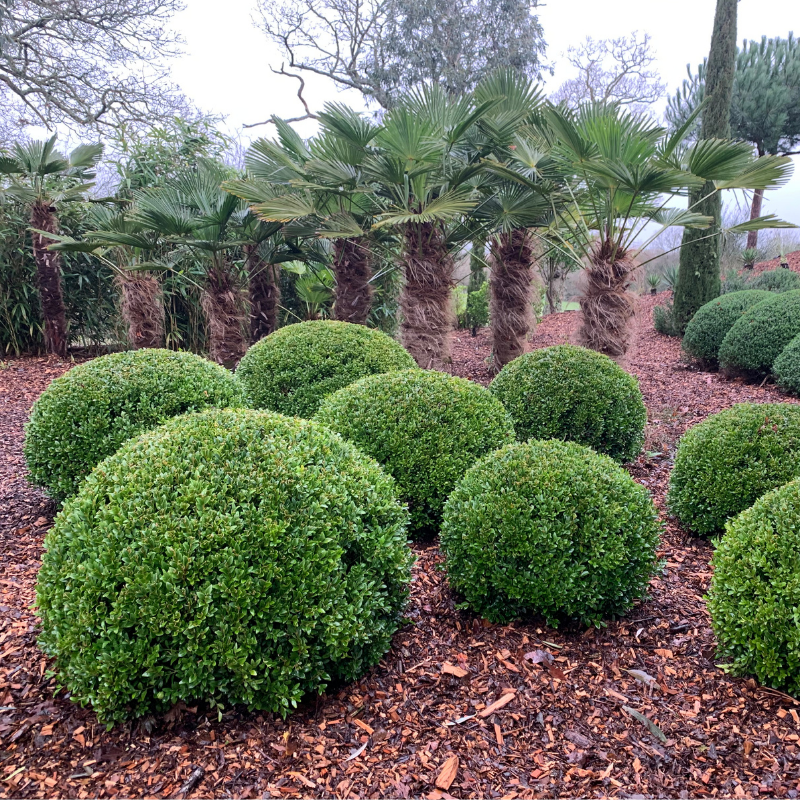
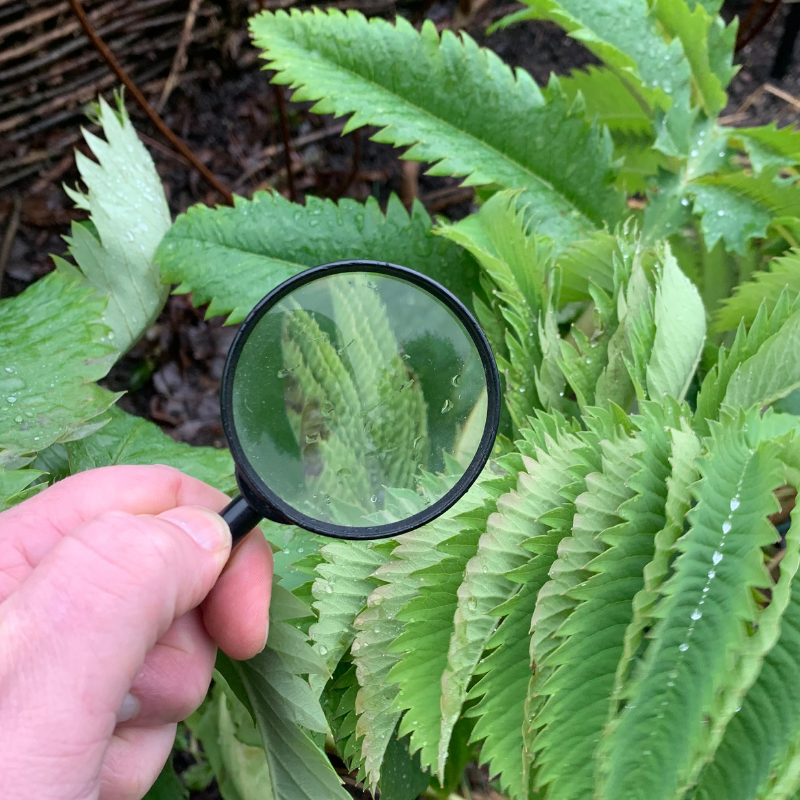
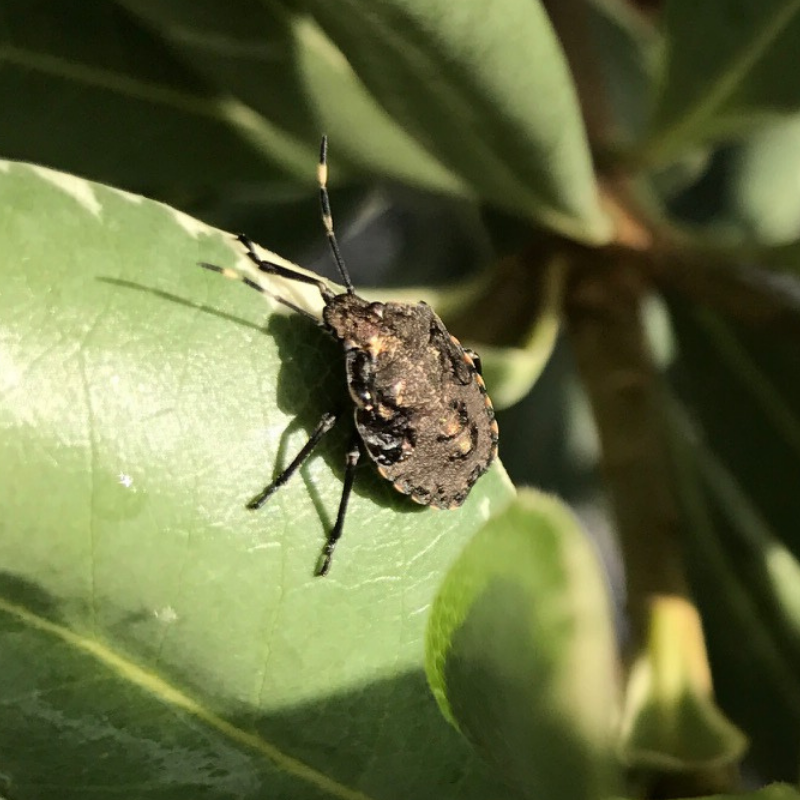
Inspecting
whenever you purchase new plants they should be carefully inspected for pests, including inside the root ball. You don’t want to unwittingly introducing new pests to your growing environment. Make sure you get your plants from a trusted, reliable source, and where you can return material if you are not happy. Crop inspections should then be a regular part of your growing / gardening routine.
Quarantining
If you are not sure whether your new plant material has any pests, you could create a holding area for quarantine. This way you are keeping the new material separate from your existing crops and limiting any spread of pests and disease until you are sure they are clear. This also makes treating any instances of P&D much easier, as they are contained.
Removing
It’s best to remove damaged leaves, stems and branches when you are treating a plant. This way it’s much easier to see if your remedy has been effective and whether any new damage occurs after treatment. However, be wary of removing too much material at once and not leaving any leaves for the plant to use for photosynthesis and survival.
Weeding
Weeds are a great place for pests to overwinter. All plants should be kept free of weeds at all times, but particularly from autumn through to spring.
Cleaning
pests also like nooks and crannies in structures and surfaces (e.g. in a greenhouse). Give your growing environment a thorough clean in late October/early November and again in February, to reduce the likelihood of overwintering pests.
Ventilating
sooty mould spores like crowded, hot, sticky environments. Therefore, ensuring that plants have plenty of space for airflow through and around them is essential during the growing season. This also helps provide regular CO2 for photosynthesis, and a better-balanced environment for transpiration, which will help plants to stay healthy and fight off pest attacks.
Useful references
The RHS has a wealth of useful information about pests and diseases. Below are two links to some specific guidance which can be used in conjunction with our recommendations.

